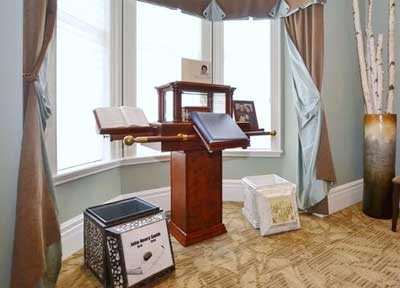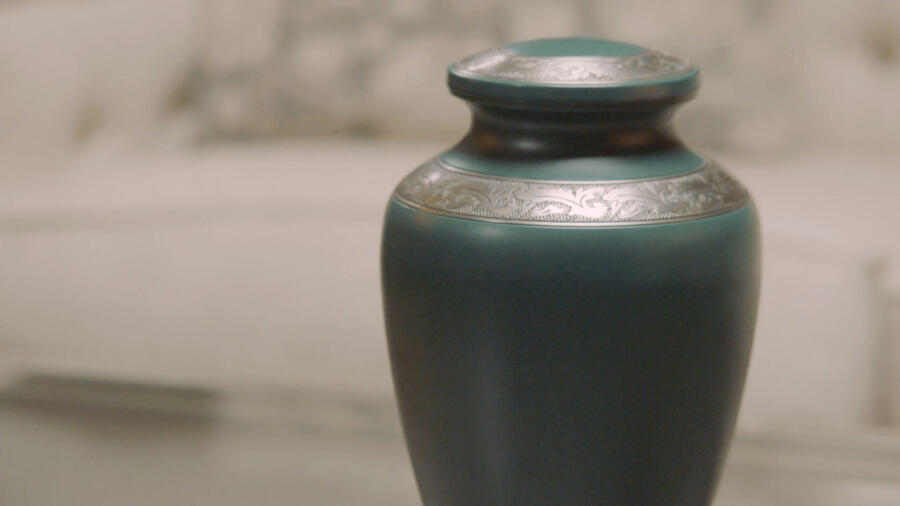
Funeral Jargon
Arrangement Conference – A meeting held between the funeral director and family members of the deceased to make funeral arrangements. During this meeting the funeral director will discuss the family’s wishes and budget and prepare a binding contract for the funeral goods and services selected by the family. This meeting usually takes place at the funeral home shortly after death. However, it may also be held anywhere the family deems convenient.
Ashes / Cremains / Cremated Remains – The remains of a body after a person’s body has been cremated.
At Need – Funeral and cemetery arrangements made at the time of death.
Burial – Placing of remains underground, usually in a cemetery.
Burial Permit – A legal document issued by the local municipal government authorizing disposition.
Casket – A receptacle of wood, metal or plastic into which the dead human body is placed for public burial. Sometimes referred to as “coffin.” Casket Spray – An arrangement of cut flowers that lies atop the casket as a floral tribute to the deceased.
Celebrant – A qualified individual who works with a family to design, and conduct, a ceremony tailored to the beliefs, values and desires of a deceased individual and his or her immediate family. A celebrant may work together with a clergy person, or by themselves
Celebration of Life – A funeral or memorial ceremony with a little more up-beat tone to it. It is generally for times when the deceased has lived a good-long life or the deceased’s family wish to place first and foremost the positive qualities and service of their loved one.Committal Ceremony – The final portion of the funeral service at which time the deceased is interred or entombed and the last remarks or prayers are said; also referred to as graveside service.
Cremation – The process which reduces the body by heat to small bone fragments. When the fragments are pulverized, they are reduced to the consistency of coarse sand or crushed seashells.
Crematorium / Crematory – The building where human remains are cremated.
Death Notice – The brief notice of the death of a person, particularly a newspaper notice, which usually lists the name, age, and family of the deceased, along with details of visitation and ceremony.
Embalming – The art and science of preserving human remains by treating them with chemicals. The three goals of embalming are sanitization, presentation and preservation (or restoration).
Executor – Generally a person having been appointed by the deceased to carry out the terms of their will. Different from a Power of Attorney.
Flowerbearers – Friends or family, generally younger children or teens, who walk before or behind the casket carrying flower tributes sent to the family.
Funeral – A ceremony marking an individual’s death. The funeral service can be a religious or cultural event and helps to honour the deceased.
Funeral Coach / Hearse – a vehicle for transporting the casket at a funeral to the cemetery.
Funeral Director’s Statement of Death – A certified copy of the original certificate issued by the funeral home. Certified statements of death are used when making claims for insurance and other death benefits.
Grave Marker – Commonly referred to as headstones, these are memorials that are usually made of metal or stone which include such information as the name of the individual, date of birth and death, symbols and words of tribute; also called monuments when they stand upright.
Honourary Pallbearers – Friends or members of a religious, social or fraternal organization who act as an escort or honor guard for the deceased. Honourary pallbearers do not carry the casket.
Interment – The burial or final placement of remains.
Inurnment – The placement of cremated human remains in an urn, or vessel of the family’s choosing, and the placement of such container in a niche, crypt, grave or other suitable location in a cemetery.
Lead Car – The vehicle in which the Funeral Director and sometimes the clergy / celebrant rides. When the procession is formed, the lead car moves to the head and leads the procession to the cemetery and/or reception.
Memorial Ceremony – A service conducted in memory of the deceased without the physical body being present.
Memorial Donation – A memorial contribution specified to a particular cause or charity, usually in lieu of flowers.
Obituary – A longer notice of the death of a person with personal biographical details included.
Pall – The large, generally white, cloth spread over a casket at the funeral ceremony reminiscent of one’s baptismal garment and symbolizing the equality of all people in God’s sight. It is a sign of hope, of new life beyond this life.
Pallbearers – Individuals whose duty it is to carry the casket, when necessary, during a funeral service. They are generally close friends and relatives of the deceased.
Power of Attorney (POA) – A document which gives a person the right to make binding decisions for another who is still living. There are both Power of Attorneys for Personal Care and for Financial and Property. A POA dies with the person and the executor then takes over.
Preneed, Prearranging or Preplanning – Planning a funeral in advance of the death, usually consisting of a list of your preferences for funeral arrangements. Often funded by insurance or trust.
Scattering of Cremated Remains – Please speak to our funeral director for further clarification.
Urn – A container into which cremated remains are placed, or in which they are kept; may be made of various materials, including wood, marble or metal. An urn may also be anything the family deems as significant. For example, a cookie tin or cigar box!
Urn Ark – A special way to enhance, and allow family and friends to participate in, funeral ceremonies that involve cremation. The cremation urn is placed on display in the ark, and urnbearers can carry it in a formal procession in and out of our chapel, a place of worship, at a memorial service, or to a cemetery for a committal service.
Urnbearers – Are friends or family called upon to carry either the urn itself or an urn ark in a formal procession in and out of the memorial ceremony to the cemetery for a committal service. Or course, not all cremated remains are buried. It is totally at the family’s discretion.
Vault – A lined and sealed container, of metal or concrete, that is specifically engineered to support the weight of the earth grave as well as the heavy equipment that passes over it. By law, a vault cannot be requested by the governing institution. There are a wide variety of both casket, and urn, vaults to choose from.
Viewing – An opportunity for family and friends to view the deceased, or closed casket of the deceased.
Visitation -The time when family and friends come to visit with the deceased’s family and to see the deceased after they have been prepared by the funeral home. A viewing (visitation, wake) may take place at the funeral home, or place of worship, or some other appropriate site. This may take place a day, or hours, prior to the actual funeral service. There can also be a time of visitation when there are cremated remains rather than a physical body.
A family is encouraged to display photographs of the deceased person during his/her life (formal portraits with other family members and candid pictures to show “happy times”), prized possessions and other items representing his/her hobbies and/or accomplishments.
The viewing is either “open casket” or “closed casket.”
Many authorities consider the viewing important to the grieving process as it gives a chance to say goodbye on a personal level. It also can make it easier to accept the reality of the death, which can often seem unreal especially in the contemporary world where death is handled by professionals and the family may only know of a death through phone calls rather than experiencing it as it occurs.









